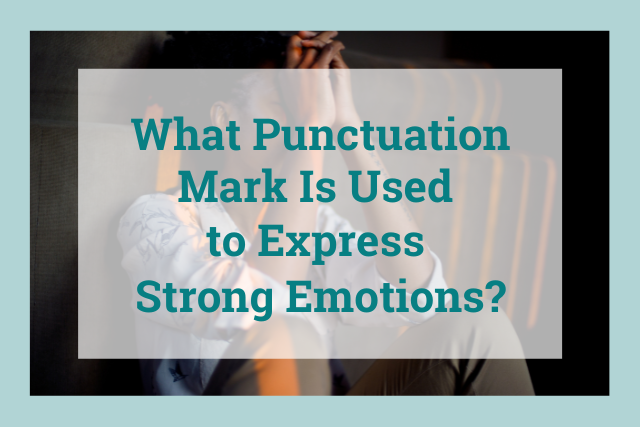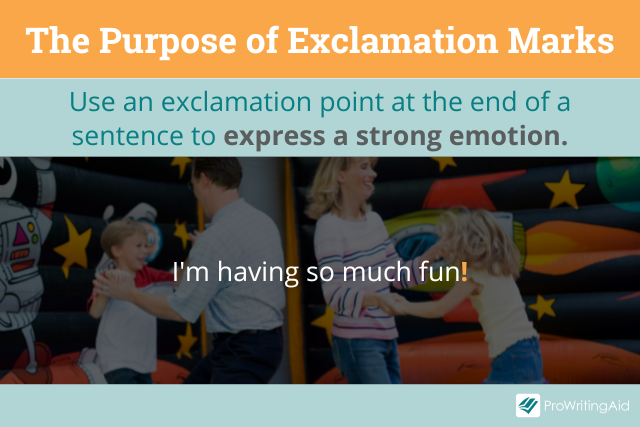
Of the three main punctuation marks used to end sentences, only the exclamation point is used to express strong emotions.
When we’re writing, we don’t have the advantage of using intonation and other verbal cues to help us get our point across. We have to rely on grammar to help us establish our tone.
Punctuation is a great way to help establish the tone of your writing. The quickest way to let your audience know that you’re expressing strong emotion is with an exclamation point.
Let’s take a closer look at how exclamation points show emotion in writing.
Exclamatory Sentences Express Strong Emotions
There are four main types of sentences in English: declarative, interrogative, imperative, and exclamatory.
Declarative sentences make a statement and use periods at the end. Interrogative sentences are questions and end with question marks.
An imperative sentence gives a command, and it can end in either a period or an exclamation point.
But exclamatory sentences always end with an exclamation point. Exclamatory sentences express strong emotions.
Which emotion you’re expressing doesn’t matter—the exclamation point is a way to express that any emotion is extra powerful.

This is why some imperative sentences end in an exclamation point. If you’re writing a command that is extra angry or urgent, for example, that’s a strong emotion and requires the exclamatory punctuation mark.
Often, exclamation points show excitement or surprise, but they can just as easily express frustration, anger, sadness, happiness, or fear.
Pay attention to the intensity of the feeling you’re trying to express when deciding whether or not to use an exclamation point.
You only need to use one exclamation point for formal writing. It’s considered improper grammar to use more than one. If you’re writing informally, you can, but don’t overdo it even in informal situations: three exclamation points are plenty to show your powerful emotions.
Examples of Sentences That Express Strong Emotions
Here are some examples of sentences that express strong emotions and need an exclamation point:
- I can’t believe you’re moving away!
- We are going to Disney World!
- Let’s go to that new restaurant in town!
- That woman was so rude!
- Move out of the way!
- Get away from the ledge!
- We’re getting married next week!
- I’ll never understand polynomials!
- That was the nastiest meal I’ve ever eaten!
Final Thoughts on Exclamation Marks
When you’re writing, don’t use too many exclamation points. Not every sentence needs to be exclamatory. Putting one or two exclamatory sentences in a paragraph is enough to show strong emotions.
As written communication becomes more common in the digital age, people have started using exclamation marks as a way to demonstrate friendliness.
In emails and messages, exclamation points can help make it clear that you’re not being rude when you use declarative sentences.
This has become a written norm, but don’t overuse it. Because exclamation points still demonstrate strong emotions, too many exclamation points in a formal email will confuse your tone. You might look too forceful or unnaturally excited.
Whether you’re writing a novel or a work email, use exclamation points in combination with your word choice and sentence structure to express emotions and establish the tone.


